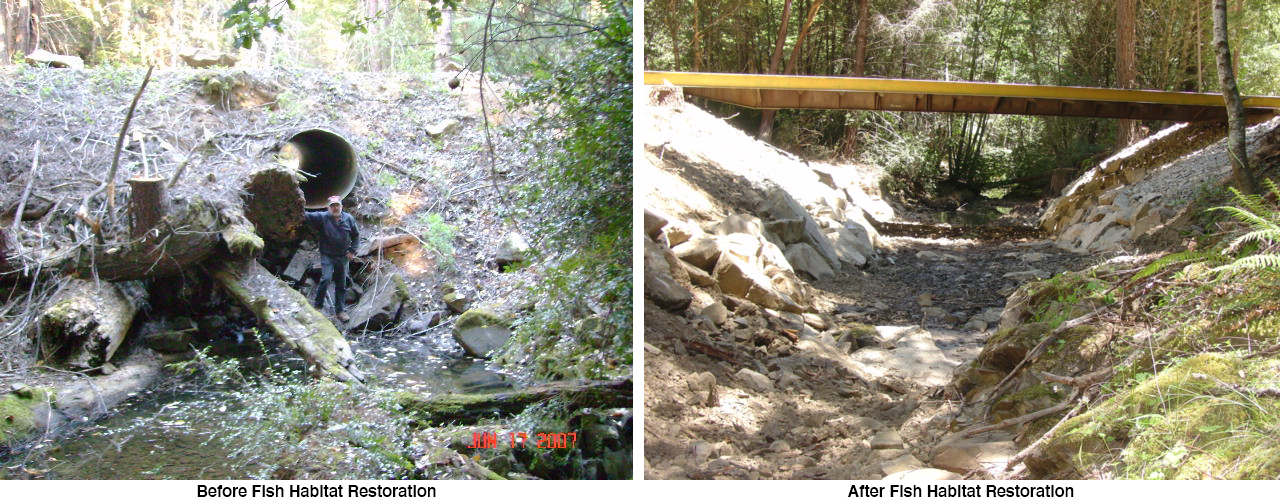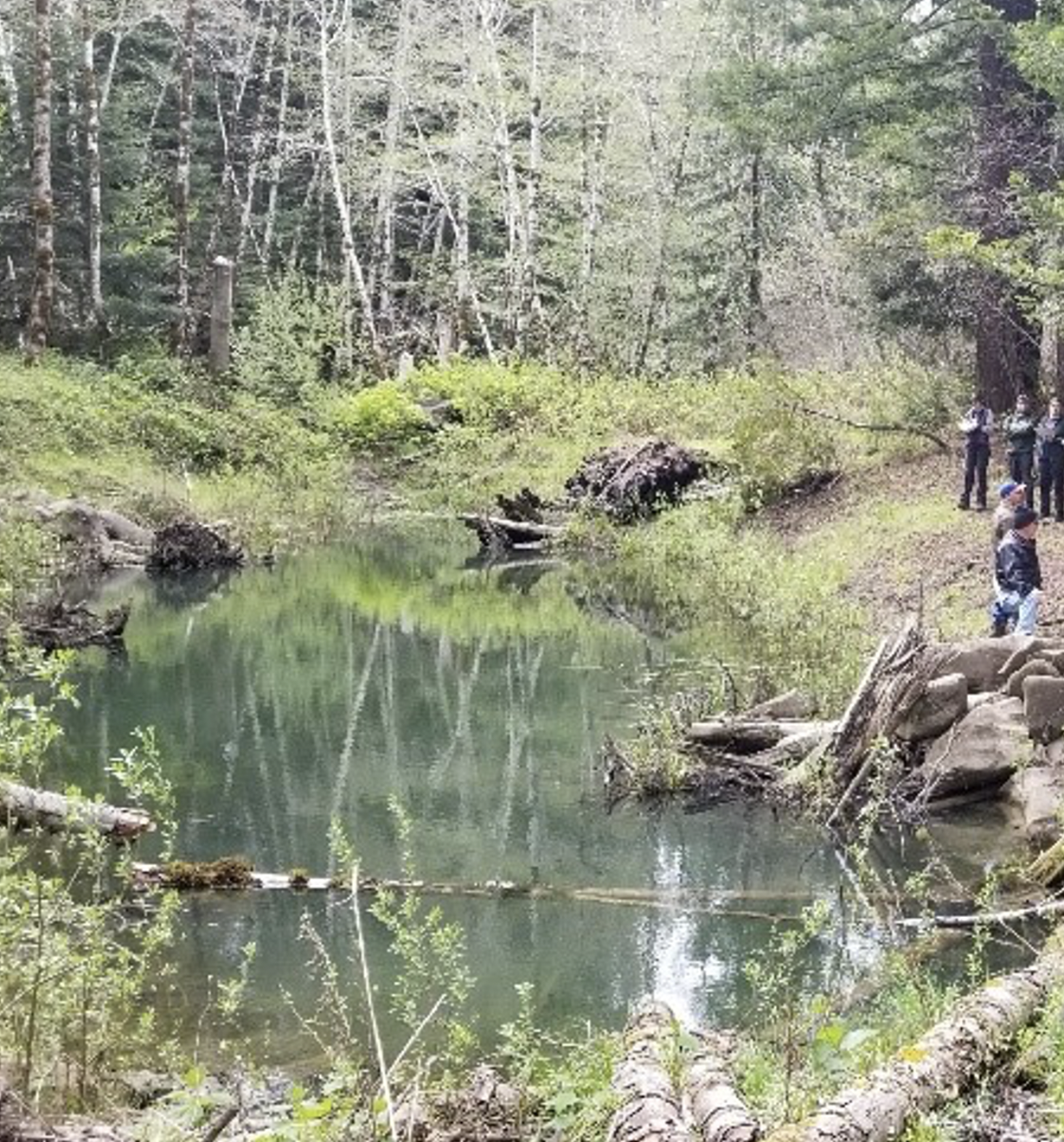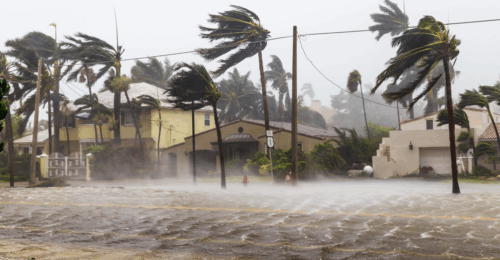In 1998 Humboldt and Mendocino Redwood Companies (HMRC) purchased 440,000 acres of redwood and Douglas fir forests in California. The land, which had been subject to intense logging for nearly a century included rivers and streams, many of which had been damaged as a result of logging practices and infrastructure. The scientists at HMRC recognized the significance of these waterways as important habitat for fish species. With the acquisition HMRC implemented a policy intended to restore fisheries habitat on the land.
One of the primary sources of habitat degredation is that of road construction. Under previous ownership, roads had been built close to streams, a practice which resulted in sedimentation. Improper sediment control leads to the settling of dirt and debris into streams. Other roads were built across streams, while many of these were poorly constructed, so much so that they prevented fish from returning to their spawning grounds.
To alleviate these conditions and restore fisheries habitat, HMRC has worked to remove old stream crossings and restore natural channels in locations where roads impeded them. Below is an example of a stream crossing restored by HMRC. The image on the left shows a pipe, installed by the previous landowner, which prevented fish passage. The second image shows the new crossing, which was converted to bridge, allowing all life stages of fish to pass through to spawning grounds. To date, the company has removed 38 such stream crossings that were barriers to fish migration, opening over 28 miles of stream habitat to fish.

Current practices of HMRC are more ecologically sensitive by comparison. Today, when HMRC harvests trees selectively in its forests, the company is obligated by state forest practice rules to remove potential sediment sources. In locations where roads are needed, stream crossings are designed to allow for fish passage.
Another example of work conducted on HMRC forestlands involves the restoration of pool habitats off the main channels of rivers and streams. These pools, called off channel habitats, are important resources for juvenile fish, providing space to escape high flows during storms when they might otherwise get flushed out to the ocean. Young fish that have access to off channel habitats are more likely to reach a healthy size prior to entering the ocean, increasing their chance of survival. Below is picture of one project recently completed in the forestlands of Humboldt Redwood Company. The main channel of the stream is located in the trees near the rear of the picture.

To learn more about the work that Humboldt Redwood Company has done to create off channel habitats for juvenile coho salmon, watch this short video.
Mendocino and Humboldt Redwood Companies were formed with the publicly declared mission to operate at a high level of environmental stewardship and at the same time run a successful business. Both companies seek to be an example of forest restoration that creates a positive, economically successful example of how private forest management can protect and restore the ecological attributes of the forest. Our forestlands are certified by the Forest Stewardship Council® (FSC® C031337) as being well-managed forests.






